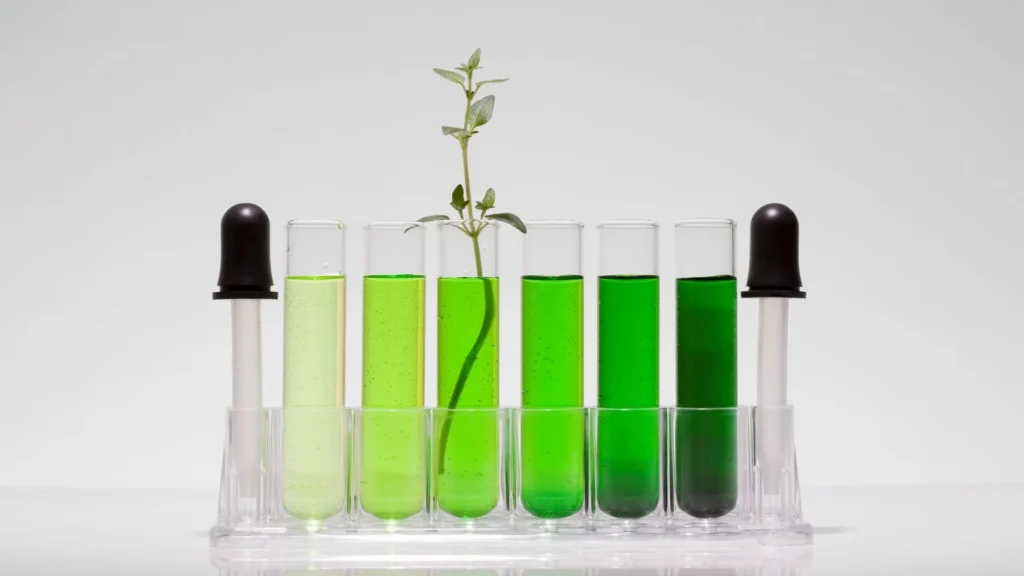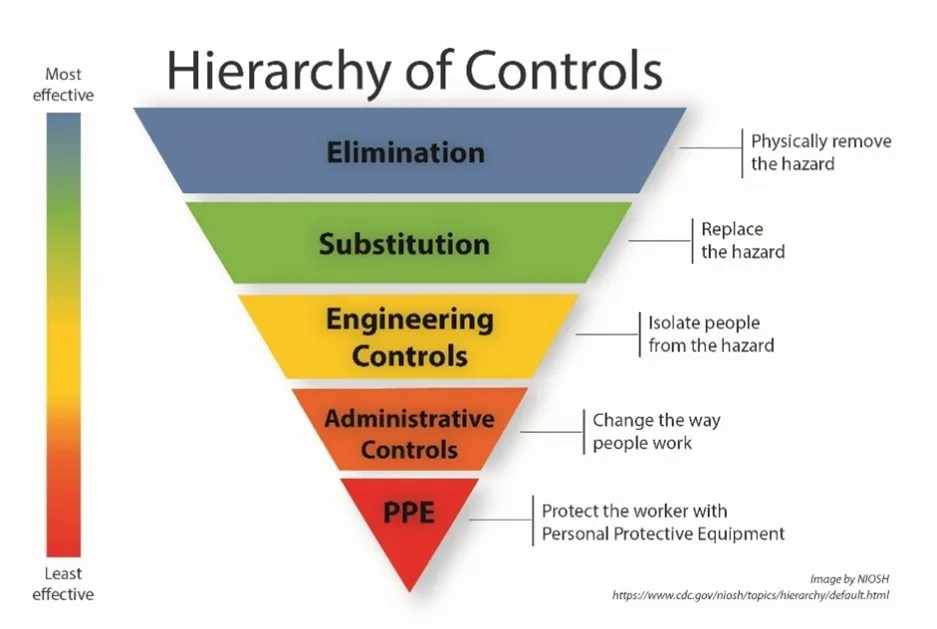Chemical management is no easy task, whether you’re managing a dozen or ten thousand chemicals in your inventory. Not only are you required by OSHA and other regulatory agencies to maintain an inventory of all hazardous materials within your workplace, but you also need to account for those materials and ensure safety data sheets (SDSs) are on file and accessible to all employees for each hazardous material, plus numerous other hazard communication (HazCom) requirements. In addition to chemical inventory management, sourcing the chemicals you use in a way that minimizes risks while not hindering production has become another pressing challenge confronting today’s EHS professionals.
Corporate sustainability can no longer be ignored as companies across the board are feeling the pressure to pursue Environmental, Social, and Governance (ESG). Because of this, it has become crucial for companies to manufacture and source longer-lasting, safer products that pose fewer risks to the end users, employees, consumers, and the environment. So, how can you meet chemical management safety expectations while working toward greater product stewardship and ESG performance? Green chemistry is the answer.
In this blog, we’ll give you the information you’re looking for about what green chemistry is, and why it’s important to safety management and ESG maturity.
Introducing ESG QuickTakes: A Sustainability E-Newsletter!
Master ESG with our NEW quarterly publication. Get expert insights on regulations, energy management, and sustainability delivered straight to your inbox.
Common Regulatory and Safety Issues with Chemicals
There are many safety and environmental concerns when it comes to manufacturing, using, and/or storing hazardous chemicals. There are different federal agencies, such as the Environmental Protection Agency (EPA) and OSHA, that monitor companies to determine compliance with regulatory requirements for chemical accident prevention, preparedness, safety, and security. Complying with these regulations helps to avoid catastrophic chemical accidents that can have devastating effects on employee safety and the environment.
Chemical products can be dangerous for several reasons. They could be flammable, react strongly with other chemicals, pose physical hazards, health hazards, they can be toxic, and other risks. There are also a multitude of short and long-term effects to workers that can result from chemical exposures. The EPA keeps a list of extremely hazardous substances (EHSs), or chemicals that could cause serious irreversible health problems. There are more stringent regulatory obligations when managing EHSs, such as Tier II reporting at lower thresholds than for other hazardous chemicals. The EPA provides information about how to protect yourself, your company, and the community from this class of chemicals and identifies less hazardous alternatives. Sourcing less harmful chemicals, such as green chemicals, helps to reduce these more stringent regulatory obligations, as well.
What is Green Chemistry?
Simply put, green chemistry is the principle of designing chemical products and processes in a way that reduces or eliminates the use or production of hazardous substances. It aims to deliver cost-competitive chemical products and processes that achieve the same function of more hazardous alternatives while reducing pollution at the source. It applies across the life cycle of a chemical product, including its design, manufacture, use, and ultimate disposal.
Benefits of green chemistry include:
- Reduction of waste at its source
- Preservation of raw materials
- Reduction of negative impacts on human health and the environment
Green chemistry offers a proactive approach to ensuring a safer workplace while having minimal to no negative environmental effects. As an EHS and ESG professional, staying ahead of compliance, improving safety, reducing risk, and preventing chemical-related incidents before they happen is an essential part of your job, and green chemistry is a powerful strategy for improving safety management and ESG maturity.
Green Chemistry and Safety Management
Integrating Occupational Health and Safety (OH&S) with green chemistry and sustainability is essential because chemical hazards are one of the most common and potentially severe risks present in the work environment. The design principles of green chemistry provide a tangible and direct means of reducing the safety hazards associated with the chemicals in your workplace. The American Chemical Society has established 12 principles of green chemistry, six of which align directly with safety management objectives and best practices:
- Prevention
- Less Hazardous Chemical Syntheses
- Design of Safer Chemicals
- Safer Solvents and Auxiliaries
- Reduce Derivatives
- Inherently Safer Chemicals for Accident Prevention
The alignment of these green chemistry principles with OH&S is clear if we view them through the lens of the NIOSH Hierarchy of Controls (Figure 1), which prioritizes elimination as the most effective means of addressing hazards, followed by use of substitution, engineering controls, administrative controls, and personal protective equipment (PPE) in descending order of control effectiveness. Green chemistry inherently focuses on the elimination and substitution of chemical hazards and is therefore the best practice when it comes to workplace chemical safety.
When workplace chemical hazards and risks are approached using green chemistry principles, the benefits extend well beyond the obvious safety and environmental safeguards and include several other advantages for the organization. Benefits for companies that eliminate or reduce their hazardous chemical inventories include:
- Cost Savings—reduce expenses and future risks
- Efficiency—improve process performance
- Industry Leadership—invest in innovation to stay competitive
- Corporate Stewardship—advance socially responsible practices
- Social Stewardship—improving employee safety and well-being
According to OSHA, actively reducing or eliminating chemical hazards at their source through informed substitutions is the most effective means of protecting workers and establishes a chemical management system going beyond the simple compliance of HazCom standards. OSHA provides a step-by-step tool kit to help with this process.
Green Chemistry and ESG Maturity
Green chemistry is often mentioned in the same breath with sustainability, and integration of green chemistry principles is directly correlated with higher levels of ESG maturity. Many companies are also recognizing the contribution of green chemistry toward a circular economy and waste reduction strategies. For example, in a linear economy, companies use raw materials to produce goods that are assumed to reach an “end of life.” They become waste, and companies continually just produce new goods to replace them. By contrast, the goal within a circular economy is to reuse, refurbish and recycle to create a closed-loop system to the highest degree possible.
Another contribution of green chemistry to ESG maturity is sustainable procurement. When chemical manufacturers and suppliers make sure the products and services they provide are as sustainable as possible, with the lowest environmental impact, it helps their customers and downstream users to improve their own ESG maturity. Some of the principles of green chemistry, including “design for energy efficiency” and “use of renewable feedstocks,” closely align with ESG and circular economy goals.
Why is Green Chemistry Important?
Green chemistry is a two-for-one approach that helps companies make their work environment healthier and safer while simultaneously reducing negative impacts on society and the environment around them. Adopting green chemistry is one of many strategies companies can take to reduce risk, improve safety, and contribute to a more sustainable world building on its ESG maturity. This makes companies more attractive to potential investors, customers, and the community.
More resources the importance of ESG:
ESG is the new standard in business excellence and it’s no longer a “nice to have” but a “must have!”
Get answers to your ESG questions on the VelocityEHS ESG Central Hub.
VelocityEHS is Here to Help!
A lot is going on in the world of green chemistry and VelocityEHS will be sure to keep you posted on the latest updates. Until then, check out our Safety Solution for more information about how we can help you optimize and simplify your chemical inventory and SDS management systems, and be sure to take a look at our ESG Solution to learn how Green Chemistry and other ESG software capabilities can help support your ESG journey.

